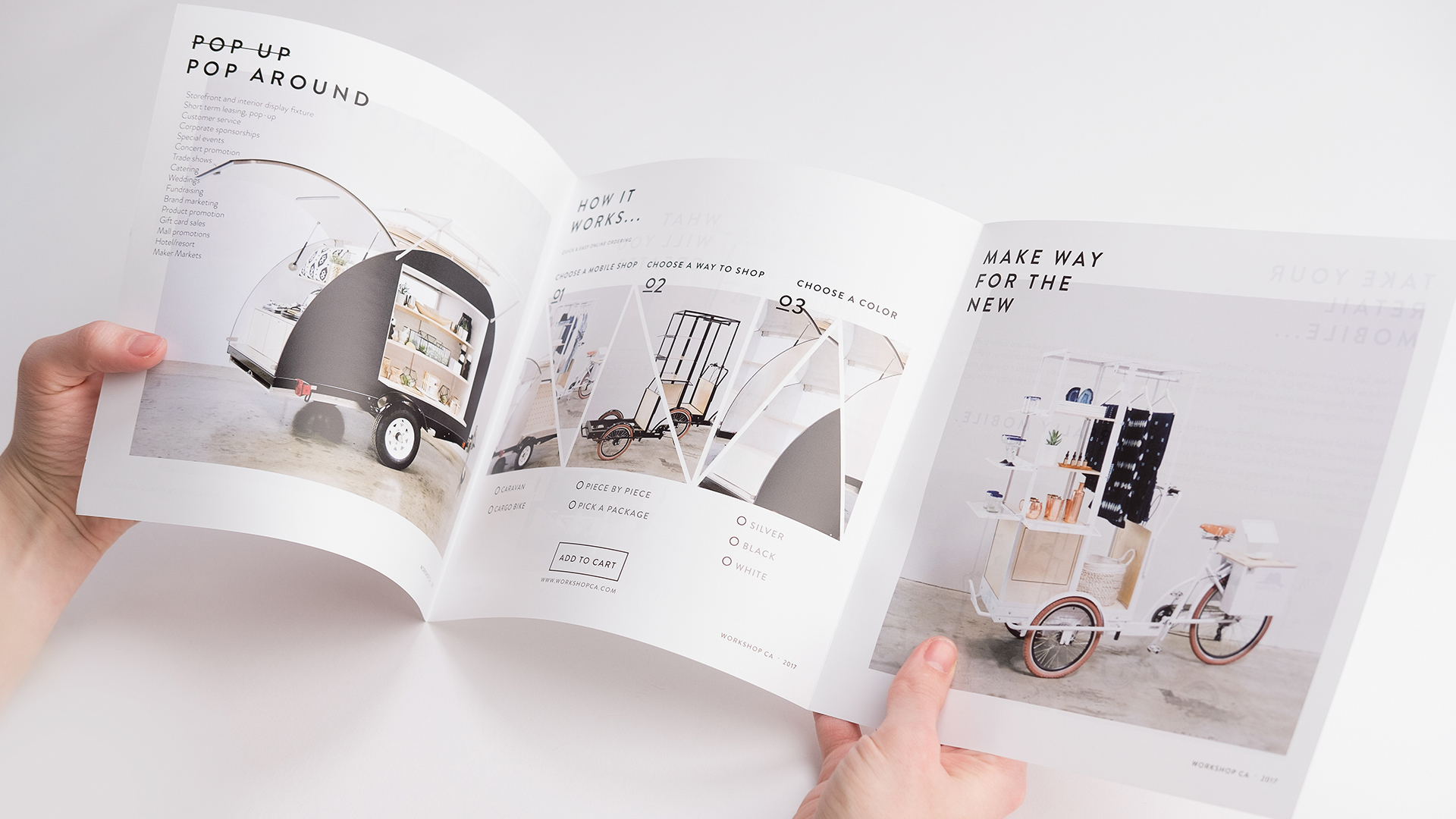Brochure Folding Ideas
Order of Brochure Panels and Calculating Their Sizes
We offer a variety of brochure folding ideas and can easily accommodate custom folds so you always get the right fold for the right project. No matter which one you choose, it’s important to remember the first page of your brochure file must host your front cover panel.
A brochure panel is one section of a folded brochure. The way panels are sized and folded determines how your brochure opens, lays flat and presents information. The first page of your brochure file must always include your front cover panel.
Below, you’ll find the most common types of brochure folds, how to calculate their panel sizes and recommendations for when to use each fold.
What Are the Main Types of Brochure Folds?
The most common brochure folds are: tri-fold, gate fold, closed gate fold, Z-fold, single fold, accordion fold, French fold, roll fold and double parallel fold. Panel sizes vary by fold, but most require inner panels to be slightly smaller so the brochure closes flat.
Brochure Folding Ideas
Below, you’ll find brochure folding ideas, panel guidelines and considerations for calculating panel sizes.
Tri-Fold
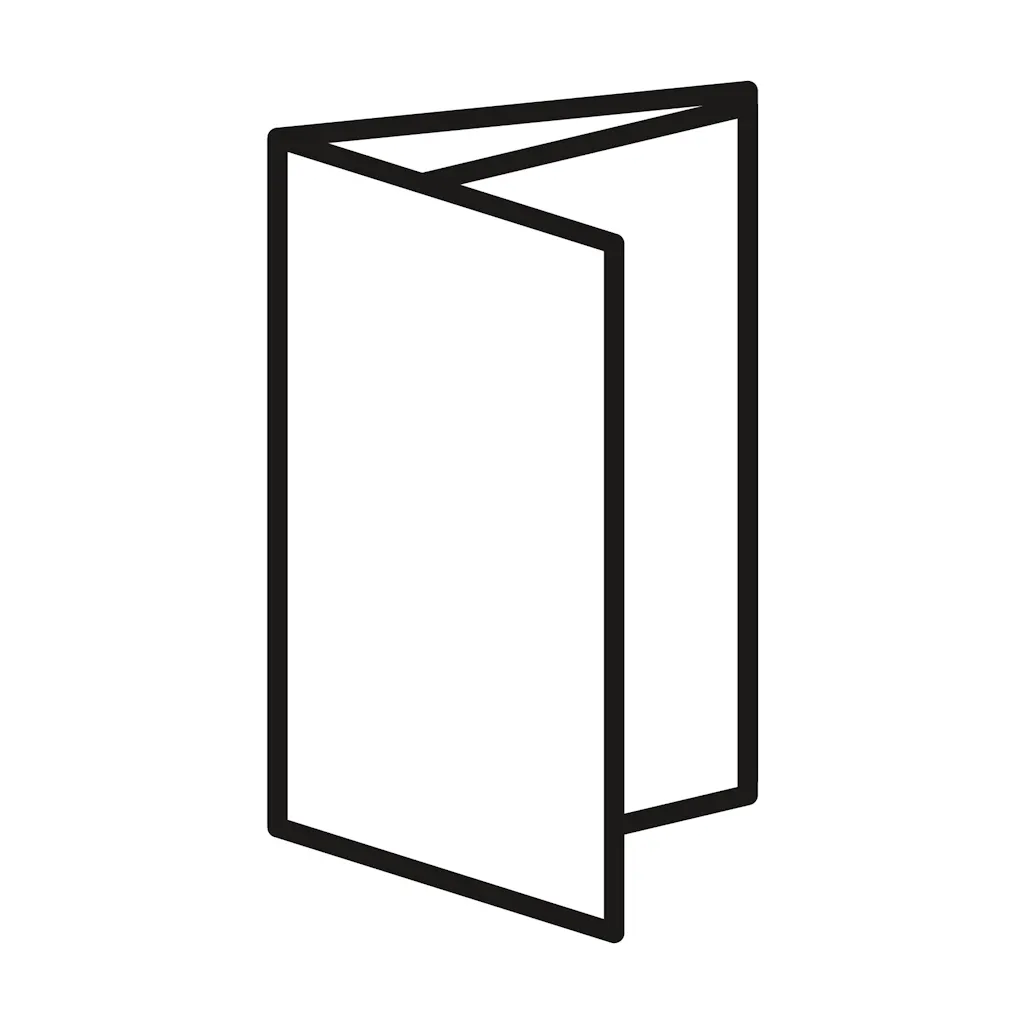
This is our most commonly-ordered fold. A tri-fold brochure has three panels, with the right-hand panel folding inside. Keep in mind that when creating your brochure design, it’s not advisable to have panels the same size. The panel of the inner fold needs to be shorter than the other two panels so the brochure stays flat when closed.
How to calculate tri-fold panel sizes:
- Divide the width of your unfolded brochure by three.
- Round that figure to the nearest 1/32″.
- Example:
- 11” (unfolded brochure width) / 3 = 3.6667”
- Rounded to nearest 32nd = 3.6875”
- To calculate the last panel, subtract 1/16″ from the cover and middle panel size (this ensures the inner fold is shorter and the brochure folds flat).
- Example:
- 3.6875” (cover and panel size) – 0.0625” (1/16″) = 3.625”
This type of fold is ideal for communicating a lot of information.
It’s best for: Menus, explanation of products or services, vacation package information, etc.
We recommend:
- 100# text paper stock for typical informational brochures.
- 80# cover paper stock for a more elevated look.
Gate Fold
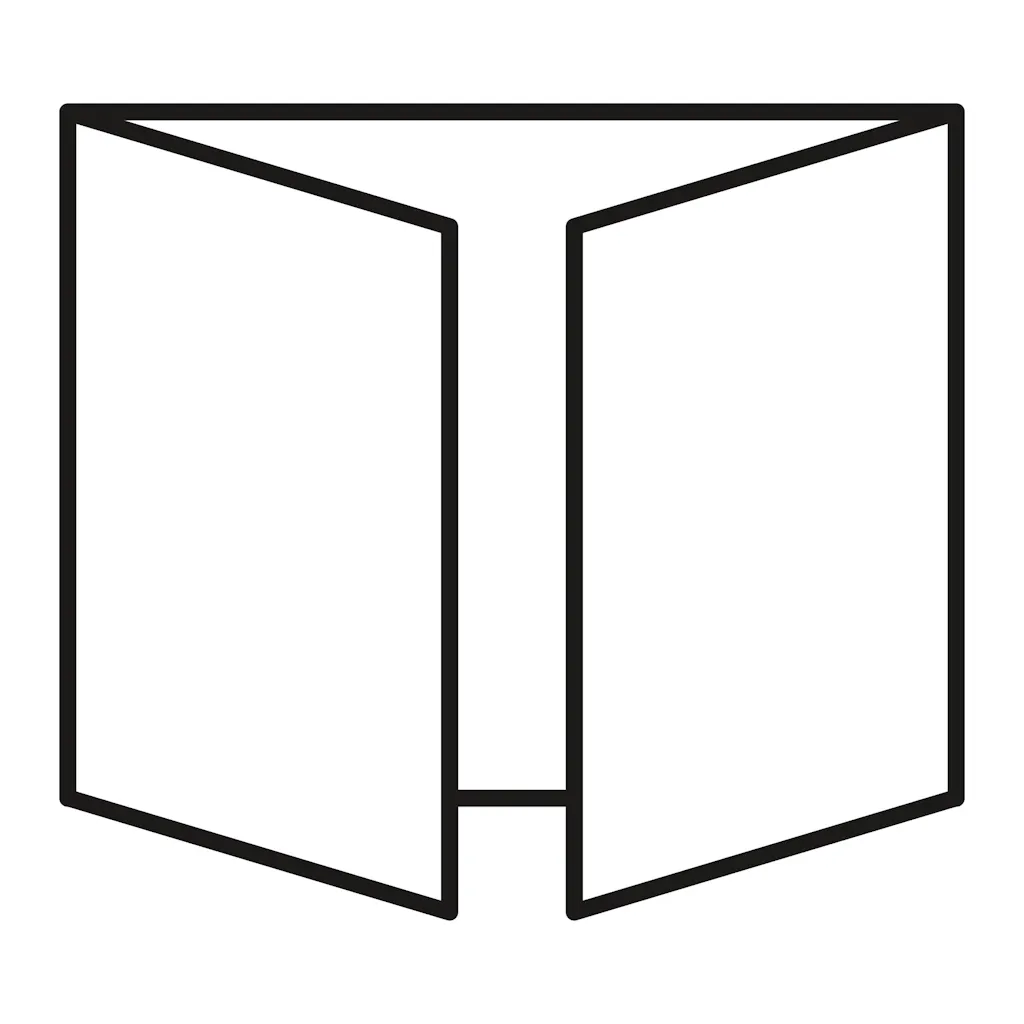
The gate fold brochure has three panels: two cover panels and one middle panel. The cover folds in to meet in the middle, hence the “gate” name.
How to calculate gate fold panel sizes:
- Divide the sheet width by two to find the middle panel size.
- The gate panels (or two front covers) will each measure half of the middle panel.
- The covers will be positioned on the left and right of the middle panel.
- Example:
- 11” (sheet width) / 2 = 5.5”
- 5.5” (middle panel size) / 2 = 2.75” (size of each front cover)
This fold is best for: Spotlighting one product or service with a dramatic opening.
We recommend: 80# cover paper stock.
Closed Gate Fold
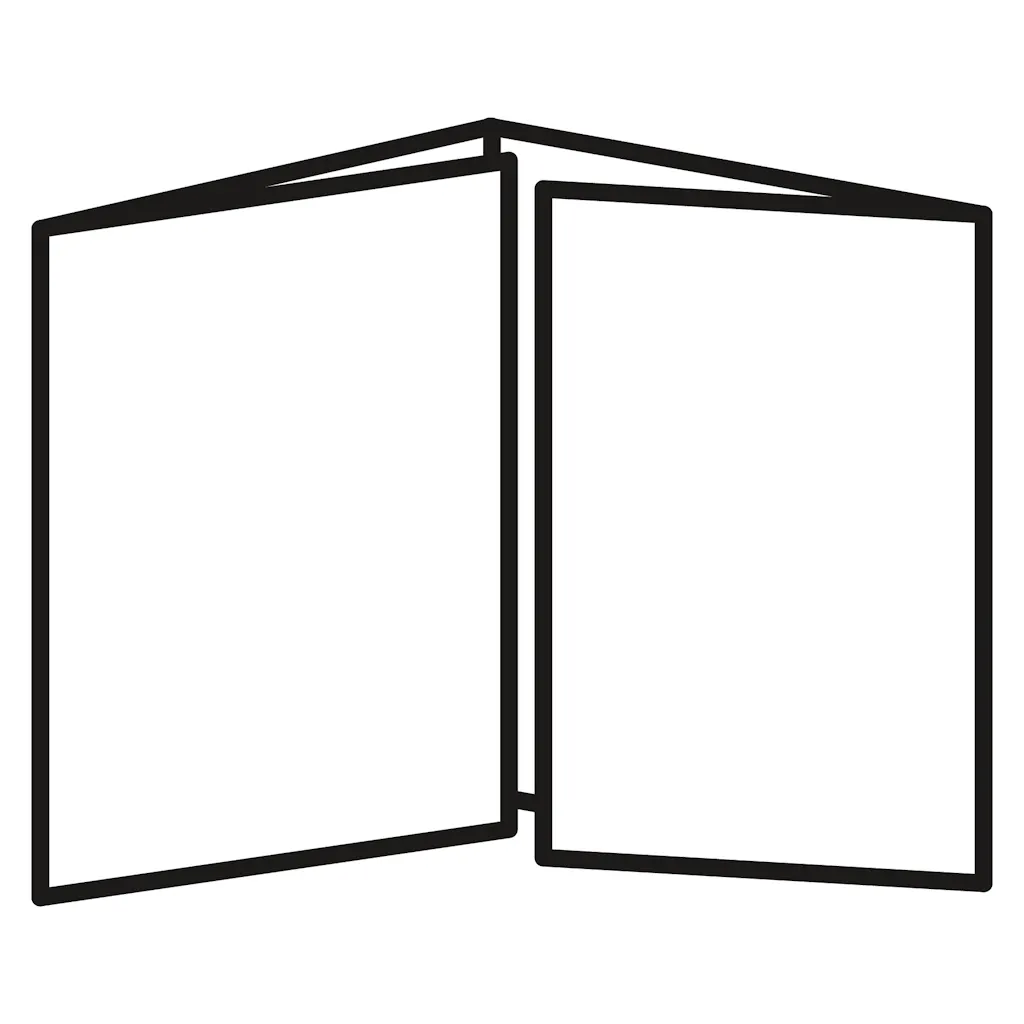
The closed gate fold is basically a gate fold that is folded vertically in half. This creates four panels to work with. The front panels of the gate will need to be shorter by 1/16” each to accommodate that extra fold.
This fold is best for: Complex presentations or highlighting a small number of products or services.
We recommend: 80# cover paper stock.
Z-Fold
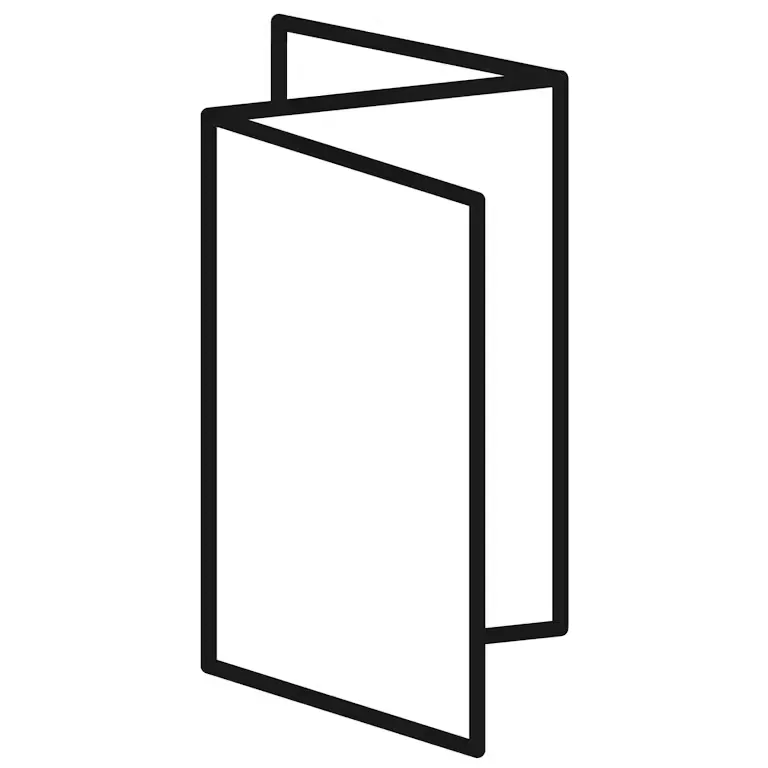
The Z-fold gets its name from the way it looks when you view it from the top. Itʼs created by alternating the folds back and forth with only three panels. This fold is a great alternative to the tri-fold. The panels are usually the same size but can be designed with varying sizes for a stepped effect.
This fold is best for: Menus, explanation of products or services, vacation package information, etc.
We recommend:
- 100# text paper stock for typical informational brochures.
- 80# cover paper stock for a more elevated look.
Single Fold
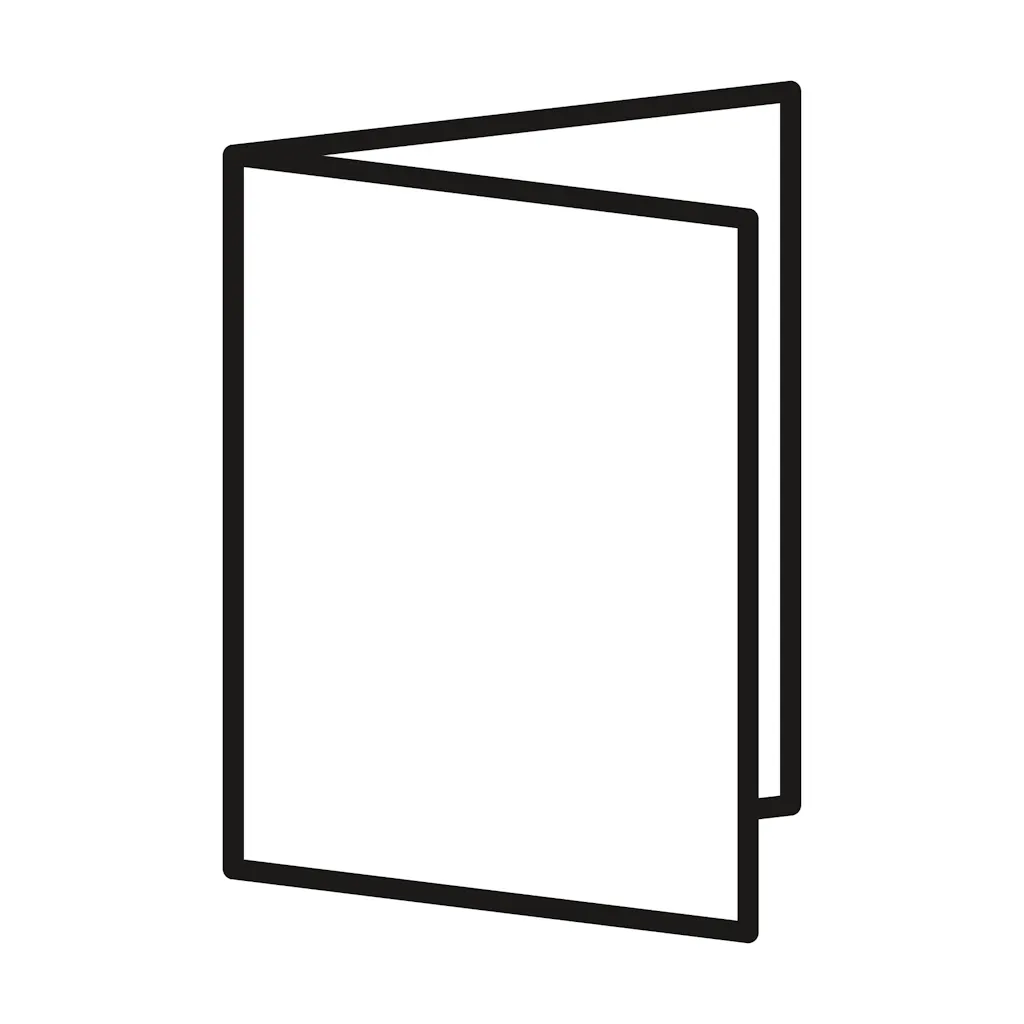
This fold can be done straight down the center of the page (half fold) or it can be off-center to create an overlap or stepped effect.
This fold is best for: Simple presentations or to feature up to two products or services.
We recommend:
- 70# uncoated text paper stock for a simple pamphlet.
- 80# cover paper stock for a more elevated option.
Accordion Fold
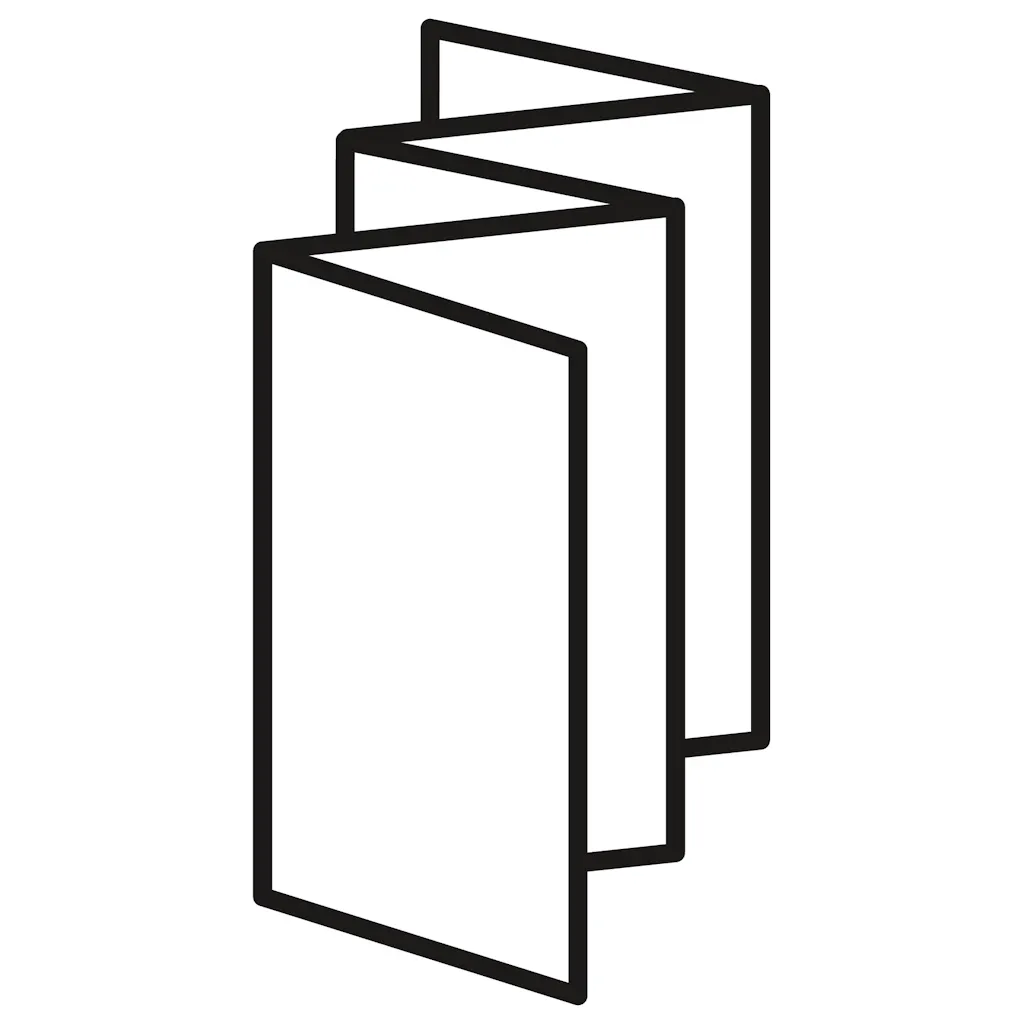
Similar to the Z-fold, the accordion fold panels are usually the same size. Accordion folds are used for brochures with more than three panels and up to 10. It is recommended to have a thinner stock if you will have more than five panels. This will ensure the brochure stays flat when closed.
This fold is best for: Chronological information or maps.
We recommend:
- 100# text paper stock is best so this fold lays flat.
- 80# cover paper stock is great for a more elevated option.
French Fold or Quarter Fold
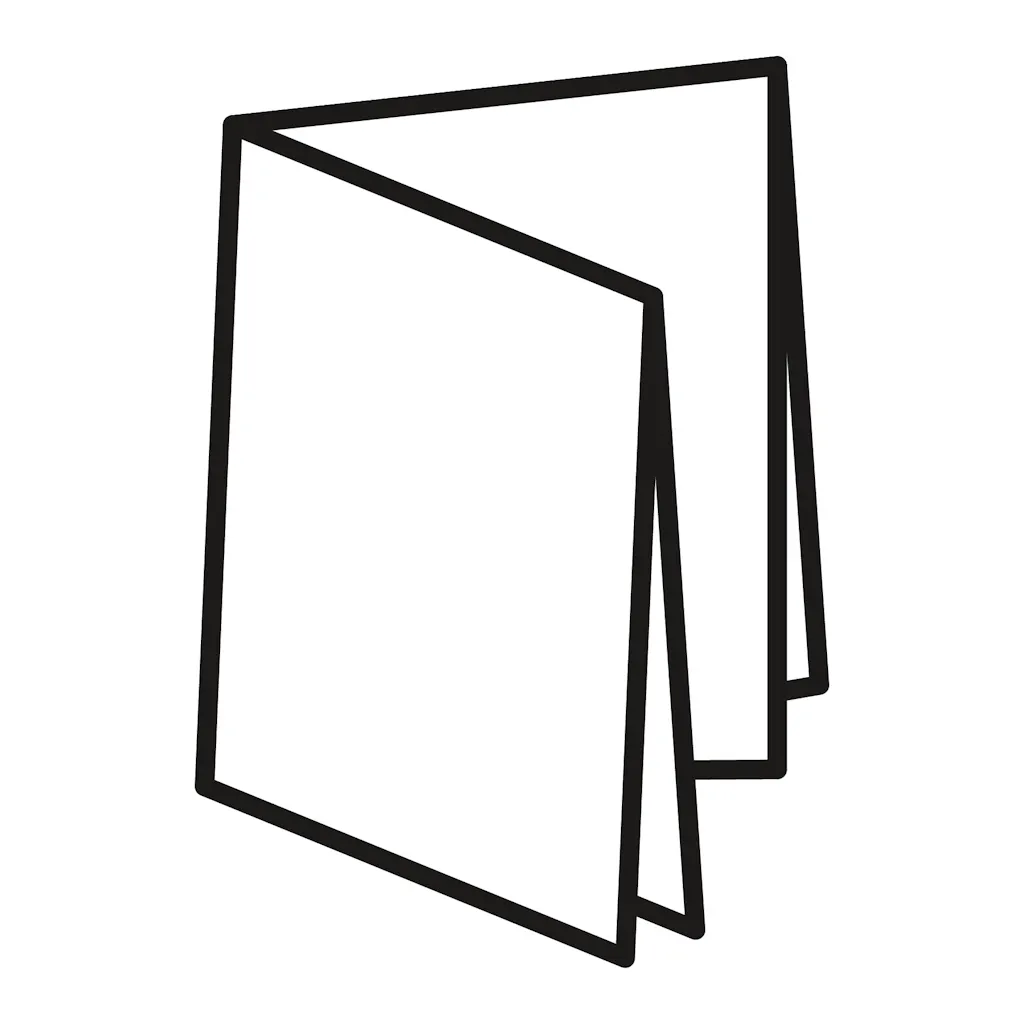
The French fold is also referred to as the right angle fold or quarter fold. It is accomplished by folding the brochure in half and then folding in half again perpendicularly. This creates four equal-sized panels.
This fold is best for: Graphic-heavy designs, posters and maps.
We recommend:
- 70# uncoated text paper stock is most common.
- 100# coated text paper stock is also a good option.
Roll Fold
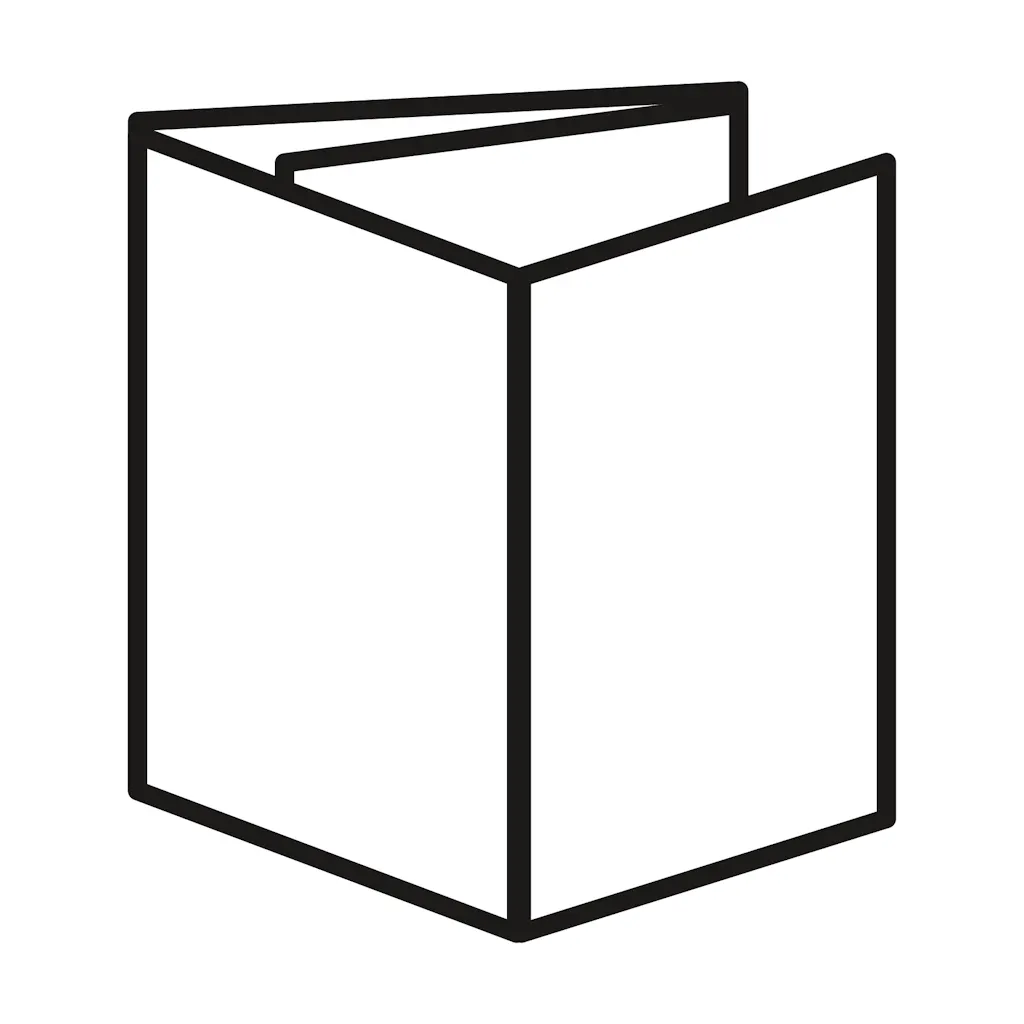
The roll fold, also referred to as the barrel fold, has a similar concept to a tri-fold. It is done by folding inward, continuing in the same direction three or four times. This results in four or five panels to work with. Just like a tri-fold, the inner panels are slightly smaller in size and increase with each subsequent fold. The standard size for a roll fold begins at 8-1/2″ x 14”.
How to calculate roll fold panel sizes:
- Divide your page width by four.
- Add .0625” to your page width to get the width of the two outermost panels.
- Subtract 3/32” (.09375”) from that width to the width of the next panel width.
- Subtract another 1/16” (.0625”) from that width to get the width of the smallest panel.
This fold is best for: Menus, step-by-step guides or informational pieces.
We recommend:
- 100# text paper stock is best so this fold lays flat.
- 80# cover paper stock is a more elevated option.
Double Parallel Fold
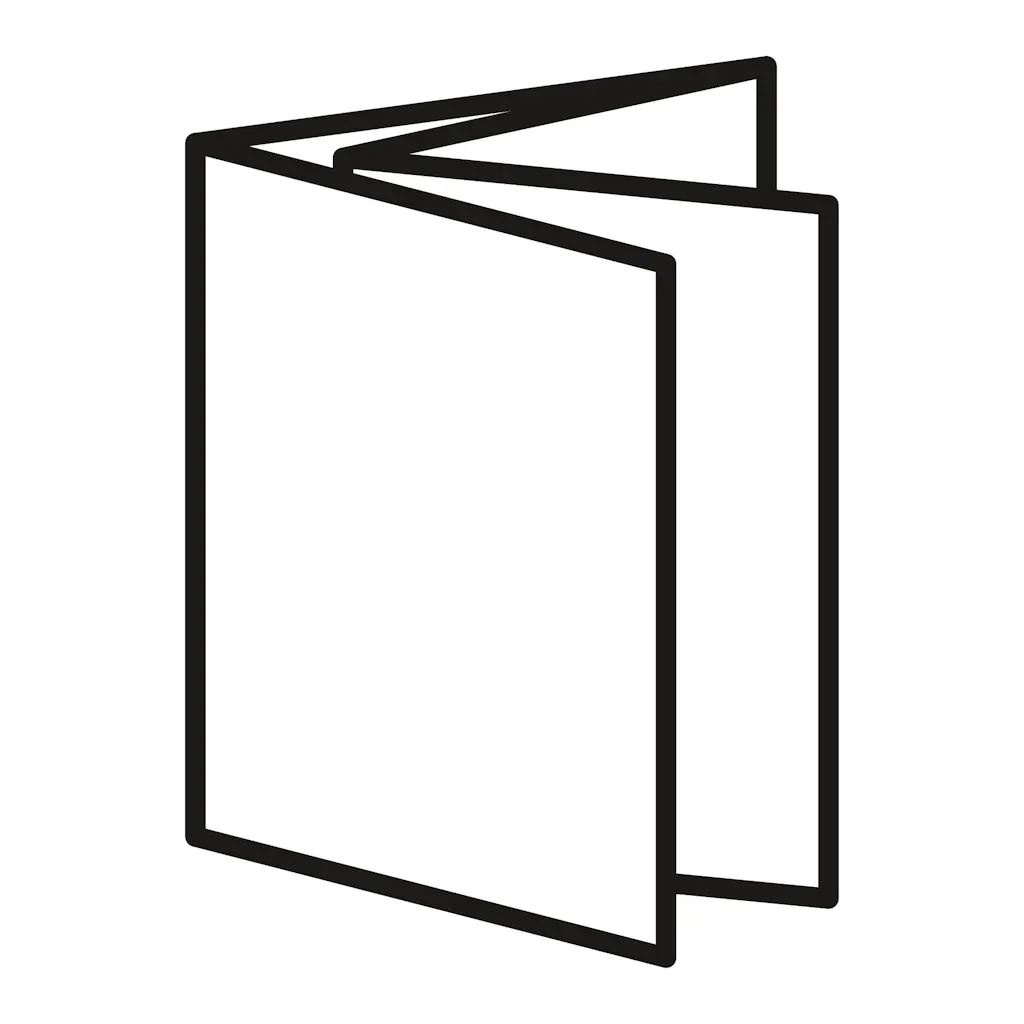
This fold is made by folding the paper in half and then folding in half again, creating two parallel bi-folds with one sheet. It results in four one-sided panels or eight two-sided panels. The standard size for a double parallel fold begins at 8-1/2″ x 14”.
For the fold to line up accurately, the inside panels must be shorter than the outer-facing panels.
How to calculate double parallel panel sizes:
- Divide your width by four.
- Add .03125” to get the size of your outer panels.
- Subtract .0625” from the outer panel size to get the size of the inside panels.
This fold is best for: Showcasing several products and services, a poster or map.
We recommend: 100# coated text paper stock.
Reference Chart: Brochure Fold Types
| Fold Type | Panels | Best Use | Panel Size Notes | Paper Recommendation |
| Tri-Fold | 3 | Menus, guides | Inner panel smaller | 100# text / 80# cover |
| Gate Fold | 3 | Single spotlight | Covers are half middle | 80# cover |
| Closed Gate Fold | 4 | Complex showcase | Covers 1/16” shorter | 80# cover |
| Z-Fold | 3 | Menus, travel info | Equal panels | 100# text / 80# cover |
| Single Fold | 2 | Simple showcase | Equal halves | 70# text / 80# cover |
| Accordion Fold | 4-10 | Timelines, maps | Equal panels | 100# text / 80# cover |
| French Fold | 4 | Posters, maps | Equal panels | 70# text / 100# text |
| Roll Fold | 4-5 | Menus, step-by-step | Inner panels progressively smaller | 100# text / 80# cover |
| Double Parallel | 4-8 | Catalogs, maps | Inner panels shorter | 100# text |
If you have questions about brochure folding ideas for your project or any of our services, please contact customer service.
